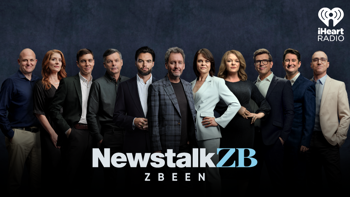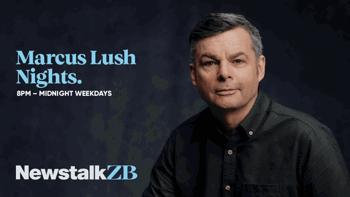Follow
the podcast on


In the Mangle-Munching Forest there’s a Nickle-Nackle tree, growing Nickle-Nackle berries that are red as red can be.
I’ll be very careful so as not to give up the end, but would you believe it’s been fifty years since first those words were penned?
That first sentence I read you is from Lynley Dodd’s Nickle-Nackle Tree. It’s a kid’s counting book that’s a bit of a Dr Seuss-ian take on New Zealand birds. And it was first published in 1976, five decades ago next year.
Truthfully, I don’t think I’ve opened The Nickle-Nackle Tree since it was read to me as a kid. But after our newborn son was gifted a copy, it didn’t take long to commit most of the Nickle-Nackle Tree to memory. My son can’t crawl or speak or catch himself when he topples over, but he can put out his fat little hand and turn the pages as we read.
Lynley Dodd enjoys a bit of market dominance at our place. We’ve got heaps of kid’s books, but there’s just something about the language of her stories that gives them that extra degree… that extra edge. Whether it’s Slinky Malinky or Zachary Quack or a Dragon in a Wagon, her rhyming is technically flawless. The cadence has a perfect, musical quality. If you’ve ever written a poem and tried to perform it aloud, you might appreciate it – that flow is much harder to achieve than you might think.
Lynley Dodd’s books use such rich language: jumbly! Rapscallion! Skedaddled! And I’m embarrassed to say I didn’t know this until my son was born, but she illustrates her books herself, and she does a beautiful job.
Of all her work, of course, Hairy Maclary is top of the pops. It’s amazing to me how those stories connect with different children. When my friends in New York had a kid a few years ago, I sent them the complete Hairy Maclary, expecting that it’d be discarded soon enough for plastic monster trucks and iPads and big city things. Truthfully, I thought it might be a bit quaint for them or perhaps lost in translation. After all, America doesn’t have dairies! But my friends and their son loved it. And I mean really loved it. Today, their book has that wonderful, taped up, slightly tatty quality of having been read hundreds of times.
And that’s the thing about children’s books. They’re designed to be read aloud, and they’re designed to be re-read and re-read and re-read again. It takes a special kind of genius to write a re-readable story that’s still fun for its reader to say aloud. That doesn’t drive its reader mad!
And think about the impact someone like Lynley Dodd has had. The countless moments of joy she’s sparked. Is there anyone in New Zealand who couldn’t finish this sentence: Hercules Morse, as big as a …?
Of course not.
I reckon children’s storybooks are an art form for which a lot of people grossly underestimate just how talented you need to be in order to absolutely nail it. You know what I mean? It’s the sort of thing that seems easy enough but is far more complex than most of us imagine. And I say art form, because finding a blissful blend of story, language, and images, something that delights children and adults, really is an art form. It’s taken becoming a parent for me to properly appreciate just how talented the best of the best really are.
And if the current reading habits in our household are anything to go by… I’d put Dame Lynley Dodd right up there. Five decades since she started publishing, her books haven’t lost any of their magic. They delight my son today as much as they delighted me when I was a kid. They haven’t lost a scintilla of relevance or appeal.
Funny eh… how quality stands the test of time.
Take your Radio, Podcasts and Music with you









